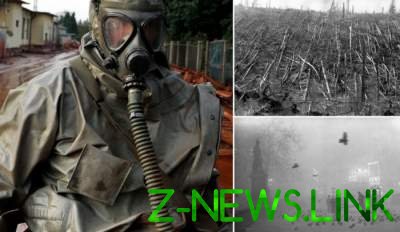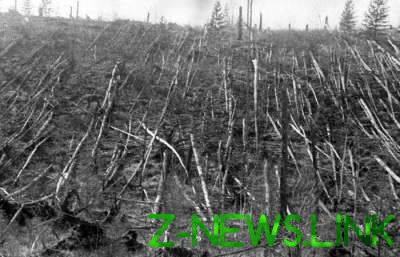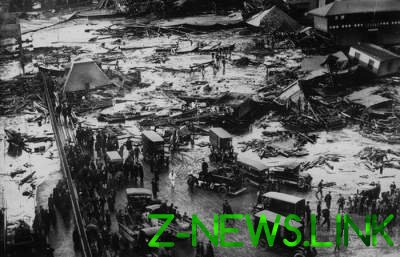 This is a unique occasions.
This is a unique occasions.
Times in history there were earthquakes, storms, plane crash and other terrible events that occurred through the fault of nature or man. The survey collected a truly global until the end of unsolved disaster.
1. The Tunguska explosion

Russia, 1908
In 1908 in the stratosphere over the remote taiga near the stony Tunguska river in Central Siberia there was an enormous explosion. The explosion, caused by (most likely) entered the atmosphere of a cosmic body, led to the fact that he was fully knocked down a pine forest on an area of 5 200 square kilometers. It is estimated that the force of the explosion was about 1,000 times higher than that of the atomic explosion that destroyed Hiroshima, the Japanese in 1945.
Some scientists believe that this object was a comet (the proof is noctilucent clouds over Europe soon after the explosion that could be caused by the formation of ice crystals in the upper atmosphere after a sudden evaporation of the comet). Other researchers claim that the object was a meteorite with a diameter of 100 meters.
2. Flooding in Boston

USA, 1939
At noon on January 15, 1919 in Boston there was a real flood of “sweet, sticky death.” The reason was that that blew up a giant tank with the fermented molasses, which was used in the manufacturing process of industrial alcohol for ammunition and other weapons of the First world war. The streets were swept by a wave of sticky liquid with a height of 5-12 meters and a width of about 50 meters at a speed of 55 kilometers per hour.
The wave destroyed the building, and it was drowning cars, horses and pedestrians. Given that the street was very cold, viscous molasses quickly froze, forever prisoners of their victims. 21 people were killed (mostly because of choking), and another 150 were injured.
3. Donor fog

USA, 1948
At the end of October 1948, American city Donor dropped a deadly fog. For four days because of the unusual weather conditions a pair of fluoride, particles of lead and cadmium and other anthropogenic emissions (? as carbon monoxide, hydrofluoric acid and sulphur dioxide) from steel plants and zinc factories in the region have accumulated in the air near the ground.
This affected almost 5000 people, and many people have developed fluoride poisoning (blood levels 12-25 times higher than normal). Twenty-two people were killed, and within a few months from complications associated with fog, had died about 50 people. Over the next 10 years, the mortality rate in the city has set records across the state. Many of the survivors for life were problems with the respiratory system.
4. London smog

England, 1952
London has long been known for its fog and haze. However, with the advent of the industrial revolution to weather conditions added smoke from the factories, with the result that the city was enveloped in a yellow smog “pea soup” (immortalized in the works of Charles Dickens and sir Arthur Conan Doyle). In the fall of 1952 combination smoke companies, fog and cold weather has led to the creation of one of the deadliest incidents of smog in the history of London.
Starting from 5 December, on the 4 day the city was enveloped in a murderous “yellow fog”, which led to the death of 4,000 to 12,000 people, as well as the most part of cattle. The majority of deaths were recorded among infants and the elderly due to asthma and pneumonia.
5. The cloud of CO2 lake Nyos

Cameroon, 1986
Before dawn on 21 August 1986 from a volcanic lake in Cameroon escaped a huge cloud of carbon dioxide (CO2), which led to the deaths of more than 1 700 people. Today scientists suggest that the release of carbon dioxide gas was probably formed by volcanic activity.
In other volcanic lakes when the seasons change, you change the density of water on the surface, so that it is periodically mixed with the underlying waters. However, in the case of lake Nyos mixing did not happen, because in the tropics the temperature remains relatively high all year round. Since surface waters of this tropical lake is not sufficiently cooled, carbon dioxide is concentrated near the bottom.
A sudden rockslide rocks or heating of the bottom due to volcanic activity, apparently, replaced the CO 2 gas bubbles to the surface where they coalesced, forming a suffocating cloud with a volume of 1.2 cubic kilometers. Deadly cloud, which probably formed in just a few minutes, killed people, cattle and other animals within a radius of 24 kilometers.
© 2018 – 2019, paradox. All rights reserved.





